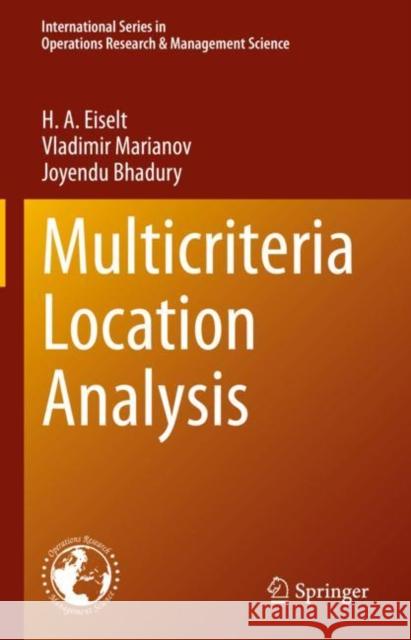Multicriteria Location Analysis » książka
Multicriteria Location Analysis
ISBN-13: 9783031238758 / Angielski / Twarda / 2023 / 345 str.
Multicriteria Location Analysis
ISBN-13: 9783031238758 / Angielski / Twarda / 2023 / 345 str.
(netto: 461,12 VAT: 5%)
Najniższa cena z 30 dni: 424,07
ok. 22 dni roboczych.
Darmowa dostawa!
This book applies Multicriteria Decision Making (MCDM) tools and techniques to problems in location analysis. It begins with a generic model for MCDM and subsequently develops specific versions of the technique for particular location problems. Throughout the book, MCDM is understood to encompass all tools and techniques that choose or rank existing or feasible solutions, including discrete multi-attribute decision making (MADM) problems, which typically include an attribute table that specifies the consequences of each decision with regard to the given criteria, as well as multi-objective linear problems (MOLPs), which incorporate all objectives in a single optimization problem.The book is organized as follows: the first four chapters introduce readers to the basic tools and techniques used in single-objective optimization, multicriteria decision making, location analysis, and other tools, such as statistical regression and geographical information systems. This is followed by ten chapters on model applications, each of which introduces readers to a specific location problem and applies one technique to solve it. The book is then wrapped up in a closing chapter that looks at the location process from a practitioner’s point of view.This book is intended as a textbook for upper-undergraduate and master-level courses on location analysis. It will also benefit decision-makers who actually need to locate facilities.
This book applies Multicriteria Decision Making (MCDM) tools and techniques to problems in location analysis. It begins with a generic model for MCDM and subsequently develops specific versions of the technique for particular location problems. Throughout the book, MCDM is understood to encompass all tools and techniques that choose or rank existing or feasible solutions, including discrete multi-attribute decision making (MADM) problems, which typically include an attribute table that specifies the consequences of each decision with regard to the given criteria, as well as multi-objective linear problems (MOLPs), which incorporate all objectives in a single optimization problem. The book is organized as follows: the first four chapters introduce readers to the basic tools and techniques used in single-objective optimization, multicriteria decision making, location analysis, and other tools, such as statistical regression and geographical information systems. This is followed by ten chapters on model applications, each of which introduces readers to a specific location problem and applies one technique to solve it. The book is then wrapped up in a closing chapter that looks at the location process from a practitioner’s point of view. This book is intended as a textbook for upper-undergraduate and master-level courses on location analysis. It will also benefit decision-makers who actually need to locate facilities.











